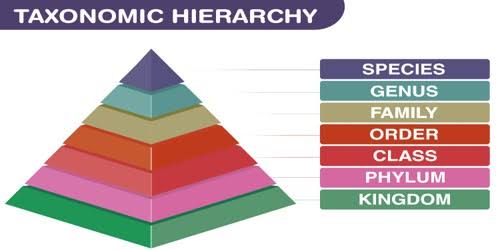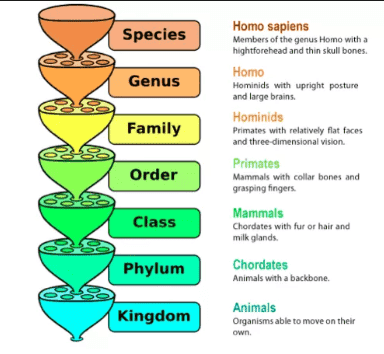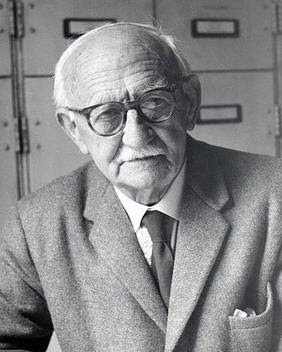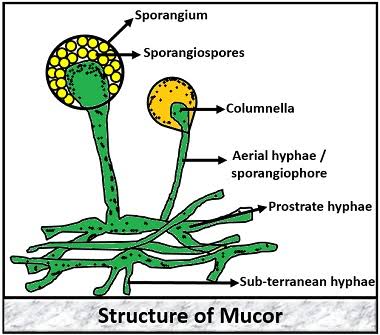Taxonomy hierarchy
People are running for the applied sciences, In the modern times as genetics, cytology, experimental biology, ecology, molecular biology etc. but a few people are thinking of the fundamental or basic branches of botany like Morphology and Taxonomy. It has become an old fashion. No applied branch can be approached without the proper identification of the plant material on which he/she is working and for this taxonomists are very much needed.
With the increased need for conservation of biological resources, the need for biodiversity assessment during the last few years has increased. However, the trend has reversed and taxonomic studies are being encouraged throughout the world.
Simpson (1961) suggested that systematics included identification, taxonomy, classification and nomenclature and used as the scientific study of the kinds and diversity of organism and of any and all relationship between them. de Candolle (1813) first coined the term taxonomy.
The basic unit of classification is species which are grouped into genus and further grouped into family suborder, order, subclass, classes and divisions.
The beginning of the classification of organism took place at remote times by the non civilized people for their usage and in their own language, with the development of language the distinction between carnivores, herbivores, poisonous plants, edible plants etc. became clear. They feel the necessity of different plants and animals for their use. They selected certain plants and animals for festivals.
In this way, the classification in crude sense got the foothold in the society. Folk systematics is gaining popularity among the pre civilized men. They recognized groups of plants on the basis of gross morphology. This is the beginning of the artificial system of classification. Their ways of classification are rooted in their practical considerations.
The history of classification starts from the time of the earliest Indian Philosophers like Charak, Sushruta, early Greek philosophers like Aristotle, Plato, Pliny and others also tried to classify plants from their own viewpoint which invariably were more philosophical in nature than scientific. The various classifications of plants proposed so far, belong to either of the three categories:
(a) Artificial: System classifies plants with the help of one or few characters, primarily with a intention of easy identification of the organism e.g. Banhin, Tournefort, John Ray, Carl Linnaeus.
(b) Natural: System is mainly based on from relationship realizing all informations available at that time. e.g., de Candolle, Robert Brown, de Lamarck, Bentham and Hooker‘s classification.
(c) Phylogenetic: System tries to classify plants based on their genetic relationships and according to their evolutionary sequences. e.g., Eichler, Hutchinsm, Bessey. C. Jeffrey (1982) presented that the system of classification can be divided into four main types:
(a) Artificial: Habit based classification made upto 1830.
(b) Pre evolutionary Natural Systems: Overall similarly between plants were much more natural e.g., Bentham & Hooker, A. P. de Candolle, de Jussieu.
(c) Phylogenetic Systems: Natural grouping as a result of decent or common character are related to each other through a common ancestry, e.g., Eichler, Engler.
(d) Phenetic System: Maximal generalizations of the totality of the features of all phenotypes e.g. Hutchinson.
HISTORY OF TAXONOMY | HISTORY OF PLANT TAXONOMY
The history of plant taxonomy or The history of taxonomy begins with compartmentalisation, of useful plants of folk taxonomy. People differentiated them as economic plants. This paved the way for herbal taxonomy. The history can be studied in different phases as follows:I. Initial Stage
- Theophrastus (370-285 BC) a Greek Naturalist also known as Father of Botany published―Enquiry into Plants‖. He proposed Crataegus, Daucus (daukan), Asparagus (aspargos) and Narcissus etc. in his work. Theophrastus classified plants on the basis of habit as herbs, undershrubs, shrubs, trees. He gives the name and description to 500 plants in Historia Plantarum oldest botanical work in existence. He pointed out the differences between dicots and monocots.
- Pliny (23-29) AD wrote multivoluminous Natural History of which 37 volumes are present.
- Pedanion Dioscorides (62 - 128 AD), a physician of Asia minor described 600 medicinal plants. His book was named Materia Medica in Greek.
- Andrea Caesalpino (1519 - 1603 AD) a Italian physician wrote De Plantis (1583), 1500 plants were described, Woody / herbaceous.
- Gaspard Bauhin (1560 - 1624 AD) Collected the plants from Italy, France, Switzerland, Books are Prodromus Theati Botanici (1620), Penax Theati Botanici (1623). He first attempted to use binomial system of nomenclature.
- John Ray (1628 - 1705 AD). British Botanist published 3 volumes Historia Plantarum (1686 - 1704). He is the first who divided the herbs / trees and divided monocotyledons and dicotyledous on the basis of one and two cotyledons.
- J. P. de Tournefort (1656 - 1708) described trees and herbs and considered corolla.
- The first herbarium was established in 1553 in Padua (ITALY)
- In the middle of 17th century, herbaria were established in different parts of the world.
- Carolus Linnaeus (1707 - 1778), a Swedish Naturalist also known as father of modern botany / taxonomy. He published Genera Plantarum (1737), Classes Plantarum (1738), Philosophia Botanica (1751), Species Plantarum (1753). After giving breif description of 7300 species arranged them on sexual system. This system was an artificial system based on few characters of plants. He introduced Binomial system eg., Rhododendron arboreum. 24 classes of Linnaeus are (1) Monandria (one Stamen) (2) Diandria (2 stamen) ........ (24) Cryptogamia (No flower).
- In initial stage taxonomy was merely started for exploration and naming of species.
II. Natural System Stage
- Antoine L de Jussieu (1686 - 1758) published Genera Plantarum and classified plants into 15 classes.
- Augustin Pyrame de Candolle (1778 - 1841), a French botanist published Theorie elementaire de la botanique in 1813 and developed morphological approach to classification. He classified plants as Vasculares and Cellulares, Monumental works-Prodromus Systematis Naturalis Regni Vegetabilis. A. P. de Candolle could not complete his work and later his son Alphonse de Candolle completed the work.
- Charles Darwin (1859) published Origin of Species, where he suggested the principle of natural selection and evolutions of species.
- Bentham and Hooker (1800 - 1884) published Genera Plantarum (1862 - 1883) gave practical use of classification ―ever since been as inspiration to generations of the Kew Botanists‖.
III.Phylogenetic Stage
- Phylogenetic classification was based on the ideas of evolution. Phylogenetic classification started with Eichler (1837 1887) and Endlichler (1804-1849).
- Engler and Prantl. (1887-1915) suggested semi-phylogenetic system of classification.
- Die Natiirlichen Pflanzen Familien (1887 - 1899) and Syllabus der Pflanzen Familien (1964). He placed monocots before dicots and orchids were considered more evolved than grasses.
- Class 1 : Monocotyledons - 11 orders
- Class 2 : Dicotyledons
- Sub class - 1. Archichlamydeae - 29 orders.
- Sub class 2. Metachlamydeae (Sympetalae) - 9 orders
- A. B. Rendle (1865 - 1938) Classification of flowering plants. He treated monocots as primitive to dicots and amentiferae and apetalous as primitive dicots.
- The first purely phylogenetic system based on Dictas of Phylogeny was given by Charles Edwin Bessey (1845-1915) which was improved by Hans Hallier (1868-1938)
- John Hutchinson (1884 - 1972)) Britishers, put forth his 24 principles of phylogeny and based on that suggested phylogenetic classification of value, in Families of Flowering Plants (1959). His classification was based as Bentham and Hooker and Bessey. First volume deals with Dicots (1928), second with Monocots (1934) and published British Flowering Plants (1940).
IV.Recent Stage
- The system was improved by contemporary Botanists like Takhtajan in Flowering Plants: Origin and Dispersal (1969); Cronquist in “Evolution and Classification of Flowering Plants” (1981) Stebbins in Flowering Plant Evolution above the Species Level (1974) and Robert Thorne in ―A Phylogenetic Classification of Angiospermae” (1976) etc.
- The Classifications were based on distribution, Ecology, Anatomy, Palynology Cytology and Biochemistry apart from Morphology.
- Techniques of herbarium preparation and presentation were developed and established.
V. Biosystematic Phase
- The last fifty years have seen a qualitative improvement in the area of taxonomic concept and application by advancement of Biosystematics.
- The ―New systematics‖ is aimed at achieving the goal of ―holotaxonomy‖.
- Huxley (1940) proposed the term ―New systematics.‖
- Camp and Gilly (1943) proposed the term ―Biosystematics‖ to new systematics.
- The number, size and shape of chromosomes were considered by cytotaxonomists as very reliable parameters for cytotaxonomic classification.
- The development of techniques like two dimensional paper chromatography, identification of chemical substances in plants as secondary metabolites led to the development of―Chemotaxonomy‖.
- The new techniques can give details as amino acid sequencing and determining nucleotide sequences in DNA and RNA.
VI. Holotaxonomic Phase
Information is gathered, analysed, and a meaningful inference is drawn for understanding phylogeny.- Collection of data, analysis and synthesis are the jobs of an independent descipline of taxonomy, i.e., Numerical Taxonomy.
- Numerical Taxonomy or quantitative taxonomy is based on numerical evaluation of the similarity between groups of organisms and the ordering of these groups into higher ranking taxa on the basis of these similarities.
- Exploratory and Consolidation phase are considered as Alpha taxonomy while Biosystematic and Encyclopaedic phase are considered as Omega Taxonomy.
FUNDAMENTAL COMPONENTS OF TAXONOMY
Taxonomy is a fundamental science with the increase in knowledge of various components developed.(i) Descriptive taxonomy or Alpha Taxonomy :
The description and designation of species is concerned with the aspect of taxonomy. Typically on the basis of morphological characters, it developed in 19th century. It started with work of Tournefort, de Jussieu and Linnaeus.(ii) Macrotaxonomy or Beta Taxonomy :
Beta taxonomy or Macrotaxonomy is the arrangement of species in the hierarchical system of taxa or higher categories. It developed in 20th century.
(iii) Gamma Taxonomy:
Aspect of taxonomy concerned with intraspecific population and with phylogenetic trends are included in gamma taxonomy. An attempt is made to account for the origin and development of species. To determine the origin of a species, a taxonomist has to depend on paleobotany which includes all taxa of extinct plant groups.(iv) Omega taxonomy:
Omega Taxonomy is an ultimate perfect system. This is based on the all available characters.
AIMS OF TAXONOMY
There main aims of taxonomy, is Identification, nomenclature and classification. There are two main approaches:(a) Empirical approach:
Empirical approach is based on observation of characters and practical aspects.(b) Interpretive approach:
The classification is based on interpretation and evolution of a taxon, e.g., phylogenetic system.Modern taxonomy combines this both approaches with the following aims:
1. To provide a appropriate method of communication and identification.
2. To provide classification which is based on natural affinities of organisms as far as possible.
3. To provide an inventory of plant taxa by means of flora.
4. To detect evolution at work, discovering its process of interpreting into results.
5. To provide an integrating and unifying role in the training of biology students regarding the relationships between many biological fields and data gathering science.
Key Questions
- What is the history of taxonomy?
- Who invented the taxonomy?
- Who is the father of taxonomy and why?
- Taxonomy Classification?
- Describe evolutionary history of taxonomy in breief?













0 Comments
If you have any query let me know.